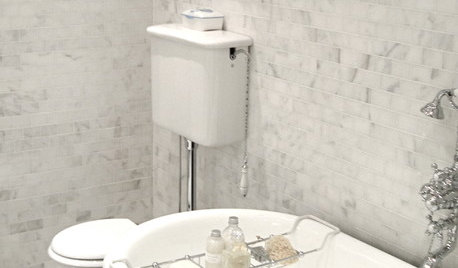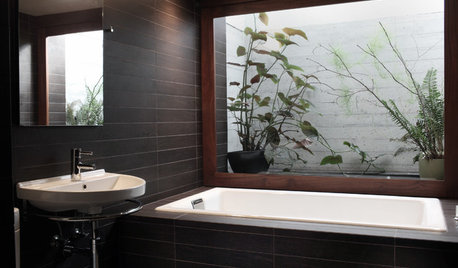Urgent help requested. Water overflowing from softener brine tank
topperdude
15 years ago
Related Stories

MOST POPULAR9 Real Ways You Can Help After a House Fire
Suggestions from someone who lost her home to fire — and experienced the staggering generosity of community
Full Story
VINTAGE STYLEVintage Style: High-Tank Toilets
Homeowners are adding the feeling of yesteryear in today’s bathrooms
Full Story
BATHROOM DESIGNWater Damage Spawns a Space-Saving Bathroom Remodel
A game of inches saved this small New York City bathroom from becoming too cramped and limited
Full Story
SAVING WATER11 Ways to Save Water at Home
Whether you live in a drought-stricken area or just want to help preserve a precious resource, here are things you can do to use less water
Full Story
HEALTHY HOMEHow to Choose a Home Water Filtering System
Learn which water purification method is best for your house, from pitchers to whole-house setups
Full Story
BATHROOM DESIGNPersonal Style: 50 Bath Designs From Creative Owners and Renters
Ideas abound in bathroom styles ranging from upcycled vintage to sleekly modern
Full Story
GREAT HOME PROJECTSHow to Switch to a Tankless Water Heater
New project for a new year: Swap your conventional heater for an energy-saving model — and don’t be fooled by misinformation
Full Story
EARTH DAYGrow a Beautiful Garden With Ecofriendly Greywater
Reducing home water waste means lower bills and a healthier planet. Here's how to set up a greywater home irrigation system that can help
Full Story
GREAT HOME PROJECTSHow to Add a Solar Water Heater
Lower energy bills without a major renovation by putting the sun to work heating your home’s water
Full Story
GARDENING GUIDESProtect a Precious Resource With a Rain Garden
Promote pure water and a beautiful landscape with a garden design that makes the most of the rain
Full Story







User
User
Related Professionals
Boise Plumbers · Beachwood Kitchen & Bathroom Remodelers · Wood River Kitchen & Bathroom Remodelers · Andover Kitchen & Bathroom Remodelers · Bethel Park Kitchen & Bathroom Remodelers · Beverly Hills Kitchen & Bathroom Remodelers · Chester Kitchen & Bathroom Remodelers · Hanover Township Kitchen & Bathroom Remodelers · Hoffman Estates Kitchen & Bathroom Remodelers · Lyons Kitchen & Bathroom Remodelers · Overland Park Kitchen & Bathroom Remodelers · Pasadena Kitchen & Bathroom Remodelers · Roselle Kitchen & Bathroom Remodelers · Spokane Kitchen & Bathroom Remodelers · Prairie Village Kitchen & Bathroom RemodelerstopperdudeOriginal Author
User
topperdudeOriginal Author
User
User
topperdudeOriginal Author
User
User
User
brendajo_2009
User
aquahow